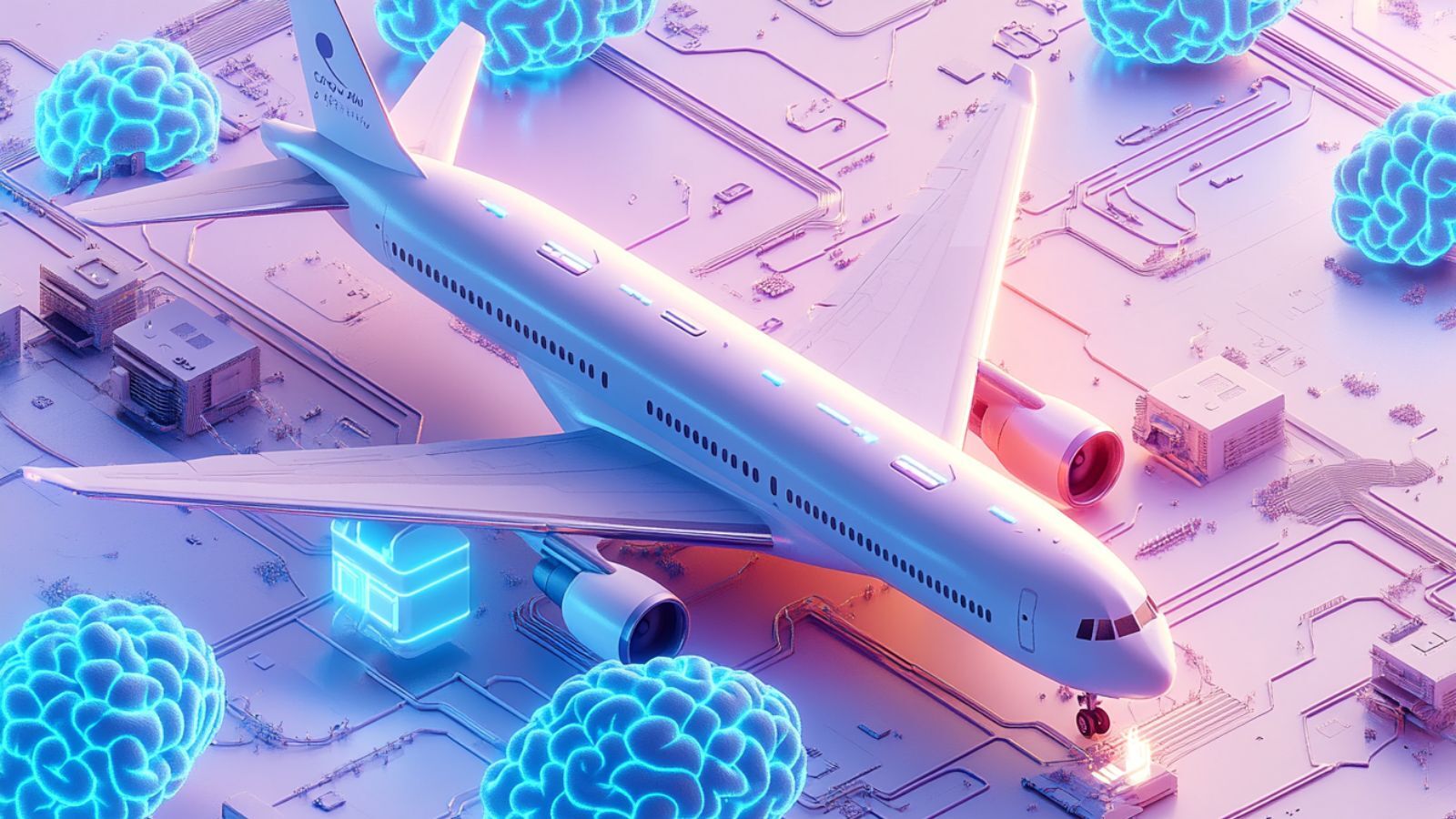This executive summary distills the key findings from our full report, “Can AI and the Right Data Rewrite the Rules of Airline Performance?,” created by OAG in cooperation with Microsoft. While aviation’s operational complexity continues to grow, driven primarily by surging passenger demand, AI is beginning to prove its value, not as a futuristic concept, but as a tangible force for solving real-world problems today.

In this summary, we present nine of the industry’s most persistent operational challenges, aligned by their place in the operational journey, from pre-flight to post-flight. For each, we highlight a real-world AI solution that is already delivering impact:
1. Labor Shortages Across Critical Aviation Roles
- The problem: Aviation demand is rising, but the skilled workforce is not keeping pace. The U.S. alone faces shortfalls of 17,000 pilots, 12,800 mechanics, and 3,000 air traffic controllers. This structural talent gap is expected to worsen over the next decade.
- AI in action: Japan Airlines' JAL-AI Report app reduces post-flight reporting time from 60 to 20 minutes, freeing crew capacity and improving administrative efficiency even with limited staffing.
2. Crew Scheduling Conflicts Fueling Avoidable Delays
- The problem: Last-minute crew shortages frequently delay flights. Traditional systems can’t adjust schedules dynamically.
- AI in action: Air India’s Copilot-enabled flight ops assistant empowers operations teams to reallocate crew quickly via natural language queries into performance and staffing data.
3. Turnaround Inefficiencies Causing Network-Wide Delays
- The problem: A short-haul turnaround window is only 60 minutes. A 15-minute delay eats up 25% of that time, risking further delays across the network.
- AI in action: Eindhoven Airport’s Deep Turnaround system, developed with Schiphol, uses AI and apron cameras to predict departure readiness and optimize crew coordination in real time.
4. Limited Visibility Into Real-Time Turnaround Progress
- The problem: Ground teams often lack visibility into what’s happening at the gate, making it hard to prevent delays before they escalate.
- AI in action: Assaia’s ApronAI at Rome Fiumicino tracks turnaround events using video analytics, improving real-time readiness predictions and cutting delays by 6%.
5. Reactive Maintenance Slowing Aircraft Availability
- The problem: Traditional maintenance often requires technicians to manually search through thousands of pages of documentation, slowing repairs and increasing aircraft downtime.
- AI in action: Textron Aviation’s “TAMI” assistant, built with Microsoft Azure OpenAI Service, enables technicians to access 60,000+ pages of maintenance data in seconds, cutting troubleshooting time from 20 minutes to just 2.
6. Maintenance Records Are Fragmented and Hard to Search
- The problem: Compliance documents and repair histories are buried across legacy systems, slowing decision-making.
- AI in action: GE Aerospace’s generative AI platform unlocks instant access to maintenance and asset data, helping stakeholders quickly assess technical status and compliance risks.
7. Fragmented Systems Slowing Cross-Team Collaboration
- The problem: Airports, airlines, and ATC often operate in disconnected silos, complicating operations and increasing error rates.
- AI in action: Frankfurt Airport’s FraportGPT brings AI assistance to employees across departments, improving data access, legal compliance, and operational planning.
8. Gate Assignment Inefficiencies Driving Excess Taxi Times
- The problem: Poor gate coordination leads to longer taxi times, fuel waste, and missed passenger connections.
- AI in action: American Airlines’ AI-powered gate assignment tool at DFW saves 10 hours of taxi time daily and cuts fuel use by 870,000 gallons per year.
9. Weather Disruptions Catching Airlines Off Guard
- The problem: Sudden storms and weather shifts still catch many operators off guard, despite modern radar and meteorological tools.
- AI in action: Tomorrow.io’s AI-enhanced forecasts help airlines like United and JetBlue predict severe weather conditions with high granularity, enabling proactive flight planning and rerouting.
Closing Thought
AI is already solving real problems in airline operations today, from reducing delays and turnaround bottlenecks to forecasting maintenance and enhancing decision-making across stakeholders. But none of this works without a strong data foundation.
That’s why this report emphasizes not just the power of AI, but the critical role of trusted, high-quality data in scaling these solutions. Together, AI and data are redefining what operational resilience looks like in aviation.
To explore these topics in full detail, read the complete report.



